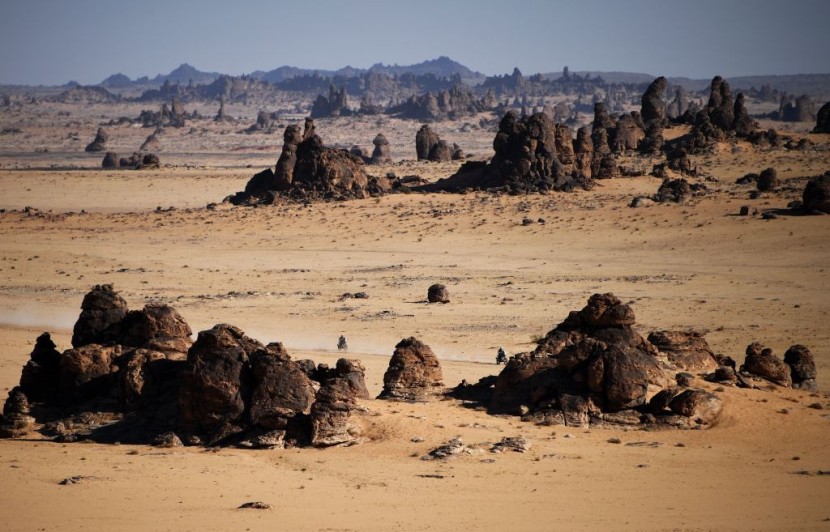
Experts discover funerary avenues that stretch for miles as old as 4,500-years old in the deserts of Saudi Arabia. Alongside the avenues are innumerable paths with Bronze age tombs that are its predominant feature. The scientists studying it are baffled why the long-distance arrangement and the other reasons for its existence.
Discovery of Pendant Tombs
In Saudi Arabia, archaeologists have found a massive 4,500-year-old network of 'funerary roads' lined with well-preserved Bronze Age tombs.
Scientists in Saudi Arabia's Al-'Ula and Khaybar provinces detail the placement of roughly 18,000 tombs encompassing thousands of miles in a new paper, reported the Daily Mail.
Scientists suggest they're composed of little stone piles grouped in complex configurations, representing the location where single people or small groups are interred.
Since they resemble circular pieces of jewelry tied to a chain or 'tail,' the tombs are called 'pendant' graves.
Human remains have been recovered in pendant tombs reaching back to the mid-third millennia BC, in the Bronze Age, cited Nation LK.
Analysis of tombs explains the arrangement
As many as 18,000 tombs have been seen on the funerary avenues and long-distance corridors that connect oases and pastures designated by graves. A mere 80 has been sampled and excavated.
The tombs are supposed to have been established as a commemoration ('cenotaphs') or for other symbolism or ceremonial purposes which are still undiscovered.
Findings' principal author Dr. Matthew Dalton from the University of Western Australia's School of Humanities, says he and his team employed satellite pictures, helicopter-based aerial photos, field surveys, and digging to find and analyze the funerary avenues with Bronze age tombs.
Read Also : Ancient Greek-Roman Suburb Discovered by Archeologists Reveals Egyptian 'Bride of the Mediterranean'
Dr. Dalton told CNN, 'The folks who live in these regions had known about them over the thousands of years.' 'But I do not think it was completely understood before we acquired satellite imagery how prevalent they are.'
The Levant and Arab Peninsula in the desert regions have interlinking pathways with countless stone monuments. Most of them are ancient tombs in these areas.
Thousands of kilometers of these roads and landmark elements, known as 'funerary avenues,' can be seen throughout the landscape, especially around and between important perennial water sources. Dr. Dalton called it the superhighways of the day when it was used several millennia back.
Their continued presence indicates that the people who lived in the Arab World 4,500 years ago were much more crucial for economic growth connected than previously imagined.
The researchers remarked that the biggest numbers of funerary monuments on these routes were found near permanent water sources. The avenues' route showed that people would use them to travel between a major oasis, such as Khaybar, Al-'Ula, and Tayma.
Dr. Dalton added that the Khaybar oases are the densest placement of tombs anywhere in the world. He said that the 18,000 graves show that many settled there about 4,500 years ago.
According to the researchers, continued excavation and analysis of remains found within these monuments would be significant in the future.
Further analysis in the journals of the graves might give an idea of why the relic is made in such a way how the people at those times decided on such a burial.
The funerary avenues in the desert that has Bronze age tombs has social significance and offers a look into the past 4,500-years ago.








